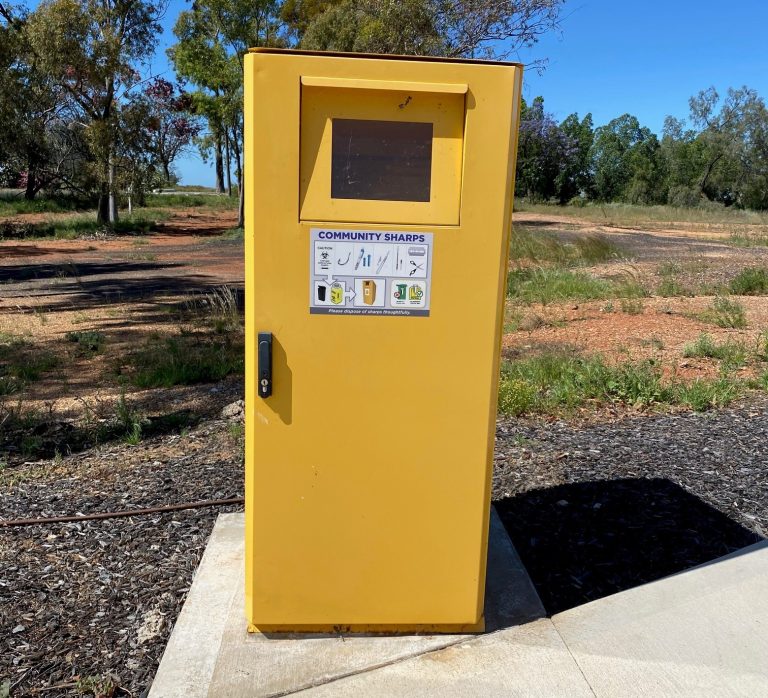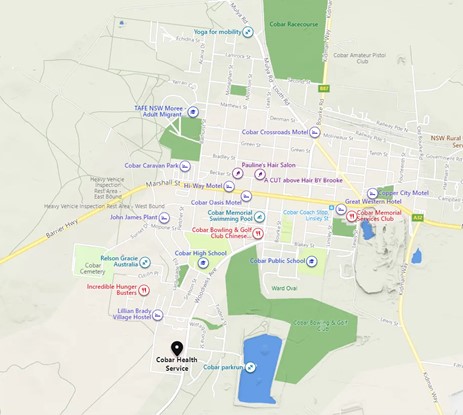
For the disposal of used needles, syringes and other community sharps resulting from the self-management of medical conditions and injecting drug use by members of the public.
“Community sharps” are sharps that have been generated by non-clinical activities. This category includes any instruments or medical devices that have sharp points or edges capable of cutting, piercing or penetrating the skin (for example needles, syringes with needles or lancets), that are designed for such a purpose and that have the potential to cause injury or infection. In practice the items for which disposal is most commonly requested are syringes, insulin pen needles and lancets used by people in the self-management of diabetes and other medical conditions at private residences. However, other items of a similar nature are also accepted, including syringes used for illicit drug use.
Depositing services are provided at Area Health Service facilities such as Cobar Health Service (Hospital).
There is no charge to access the disposal service and is available for collection 24 hours a day. The drop box is a large yellow metal bin and is located at the southern side of the Cobar Health Service (Hospital) car park.


1. Put your sharps in a sturdy, plastic container. Sharps disposal containers are often provided when you buy new sharps. If you don’t have one, order a container online or from a hospital, medical company, or pharmacy. Or use something made of strong plastic, like an empty bleach bottle or laundry detergent bottle. The container must be leak-proof and have a lid that cannot be punctured by the sharps.
2. Screw the lid on and seal it with duct tape when the container is 3/4 full. Make sure the lid is secured tightly. Then take a strip of duct tape and wrap it around the lid, sealing any space that might be left between the rim of the lid and the bottle itself. This adds another layer of protection to prevent any hazardous materials from leaking out.
3. Label the container “Do Not Recycle” and “Biohazard.” Write this on the outside of the container in large, legible handwriting. Use a permanent marker that isn’t easily rubbed off. Clearly describe what’s in the container by adding words like “used sharps” or “hazardous waste.”
4. Take your container to the collection site (Cobar Health Service – Hospital). Don’t leave the container unattended at the collection site, it must be deposited into the drop box. Simply open and drop your container inside.
Persons wishing to use the disposal service are not required to disclose information or documentation of a personal or medical nature.
An Area Health Service is not required to provide a disposal service for commercial generators of clinical waste/sharps.
Sign in with your email and password
Create your account and post ad
Already have an account? Login